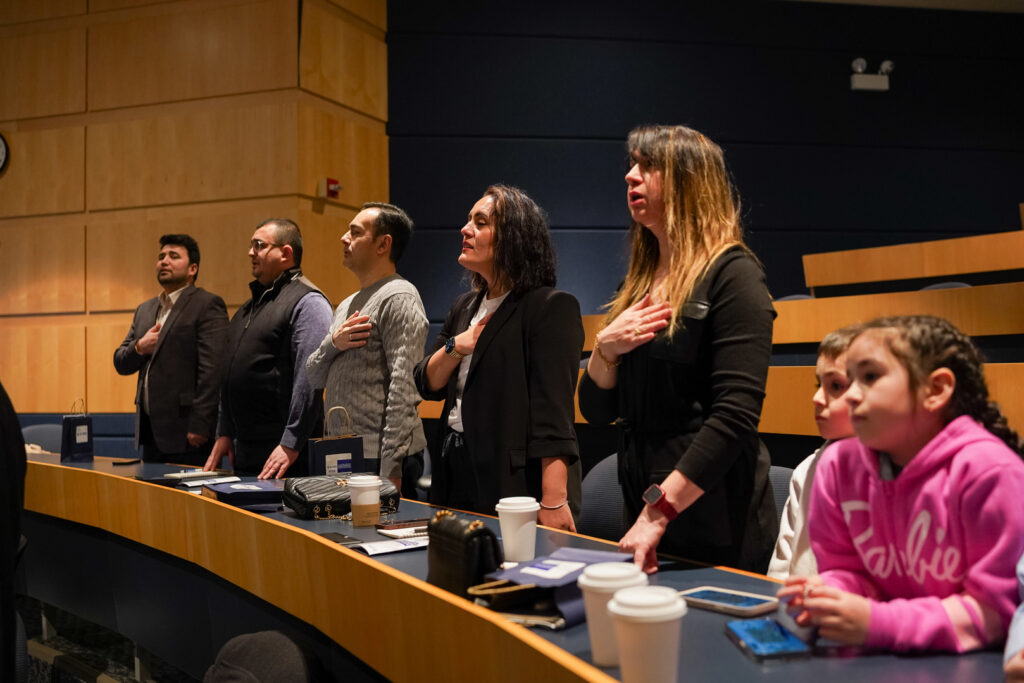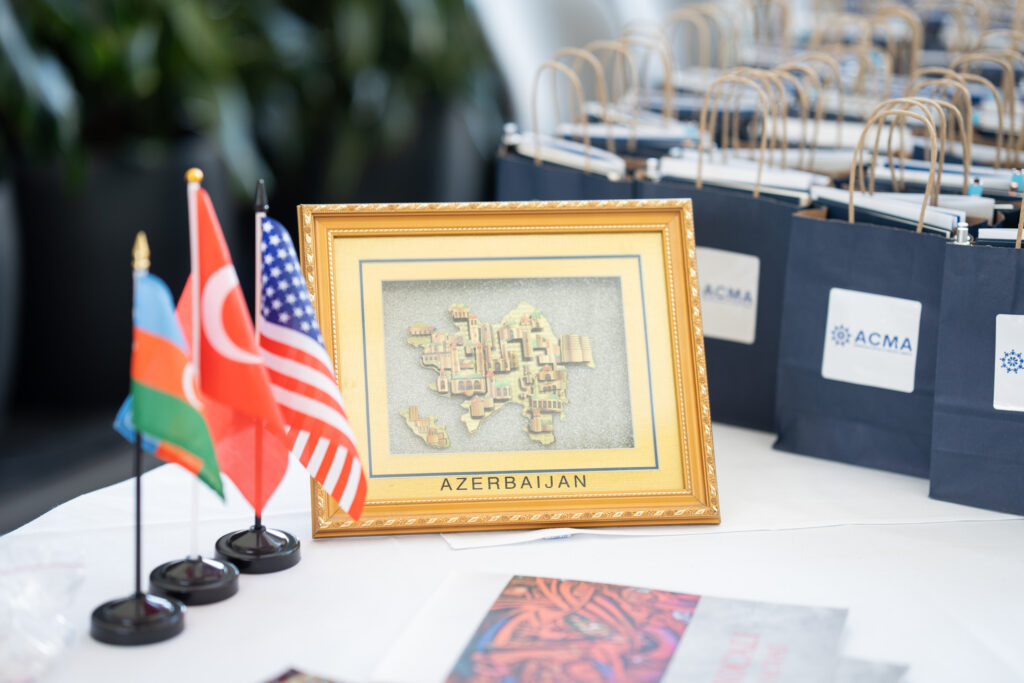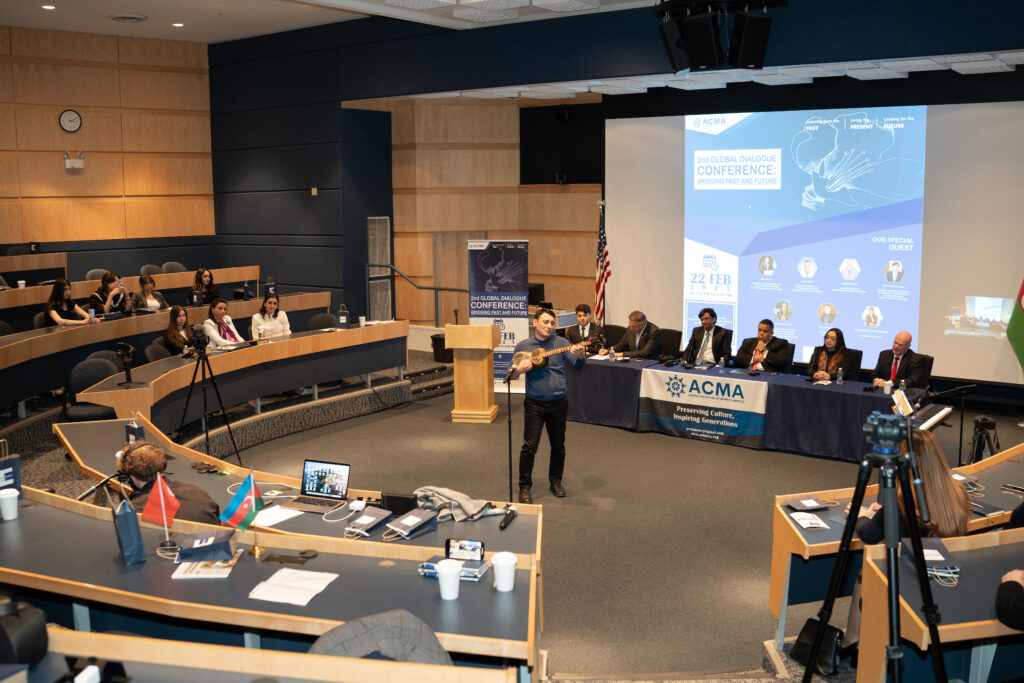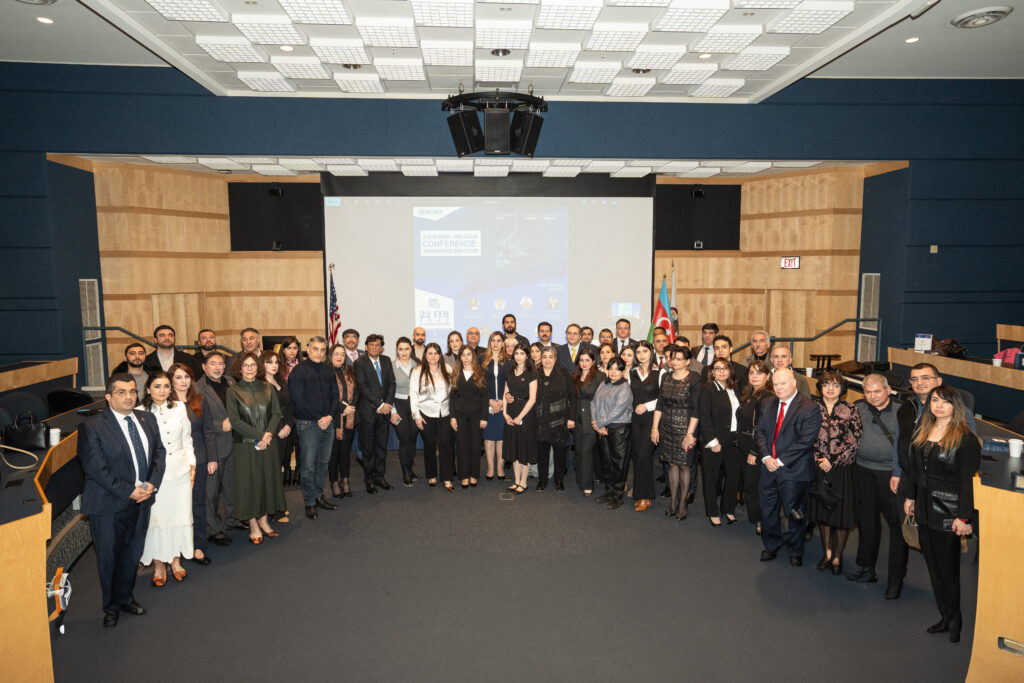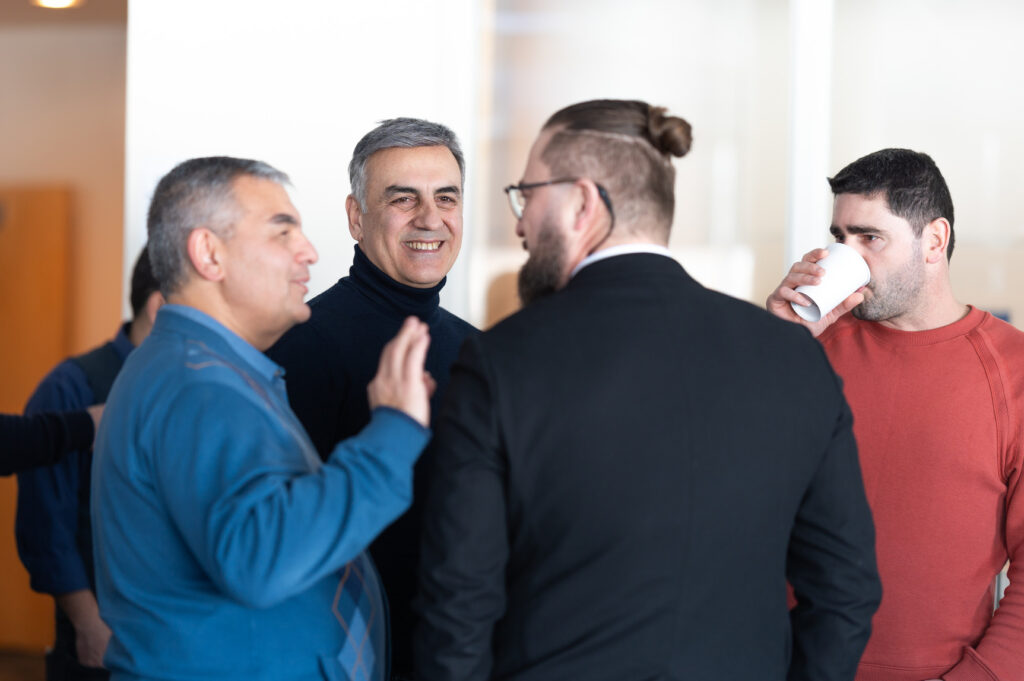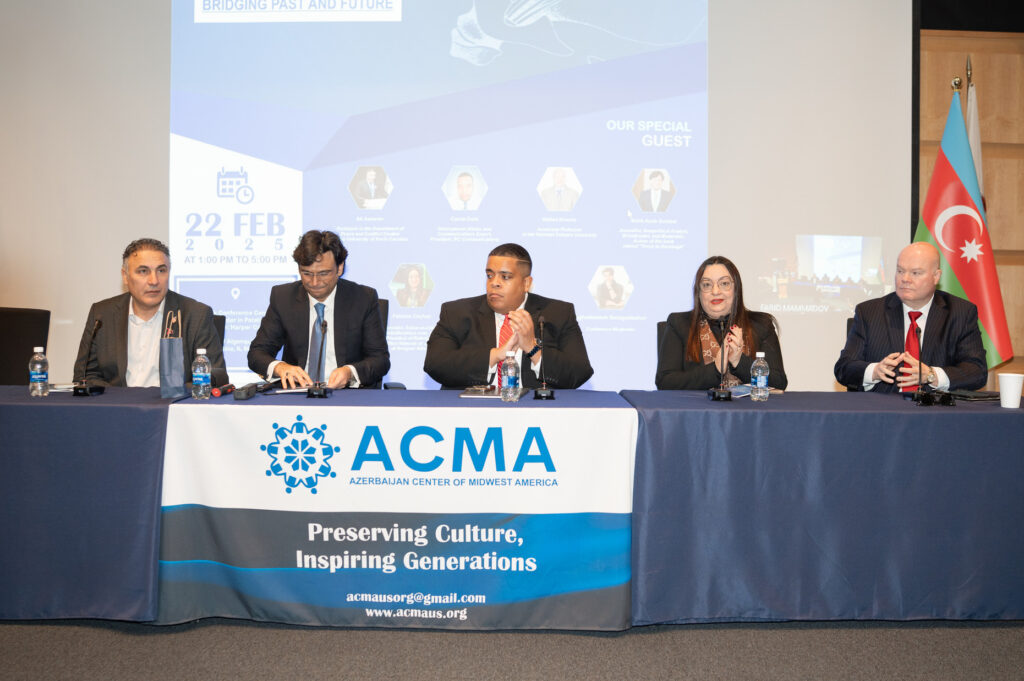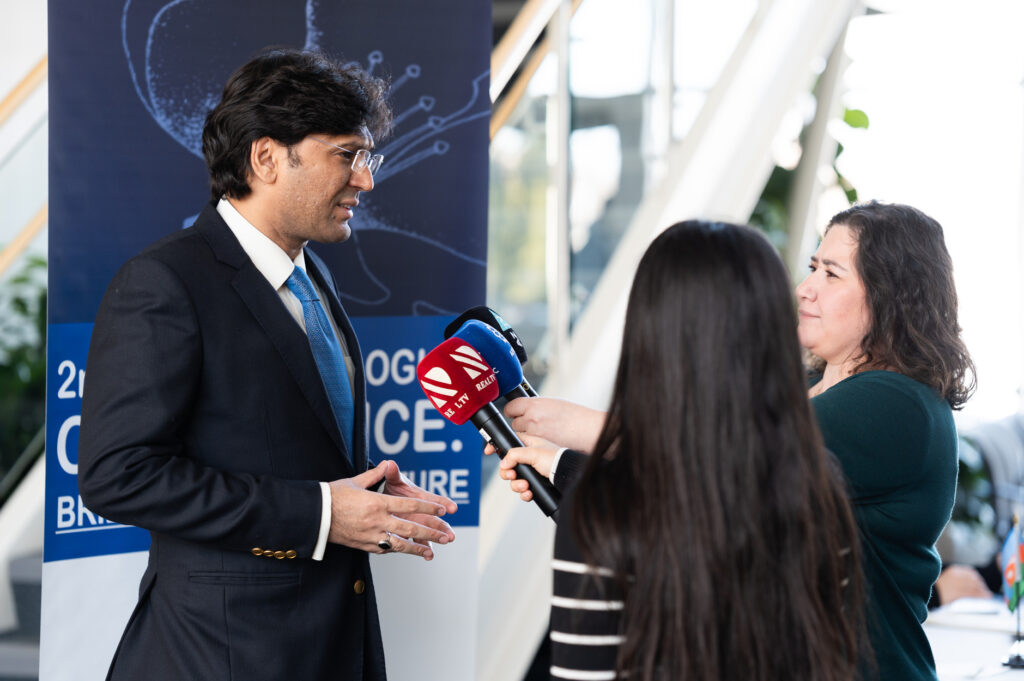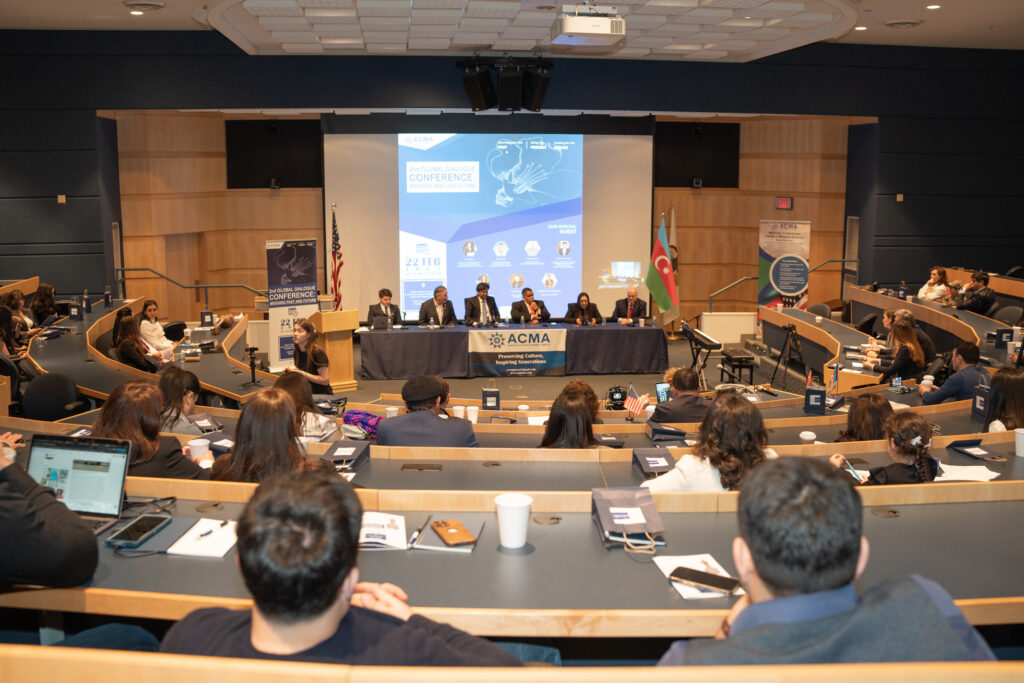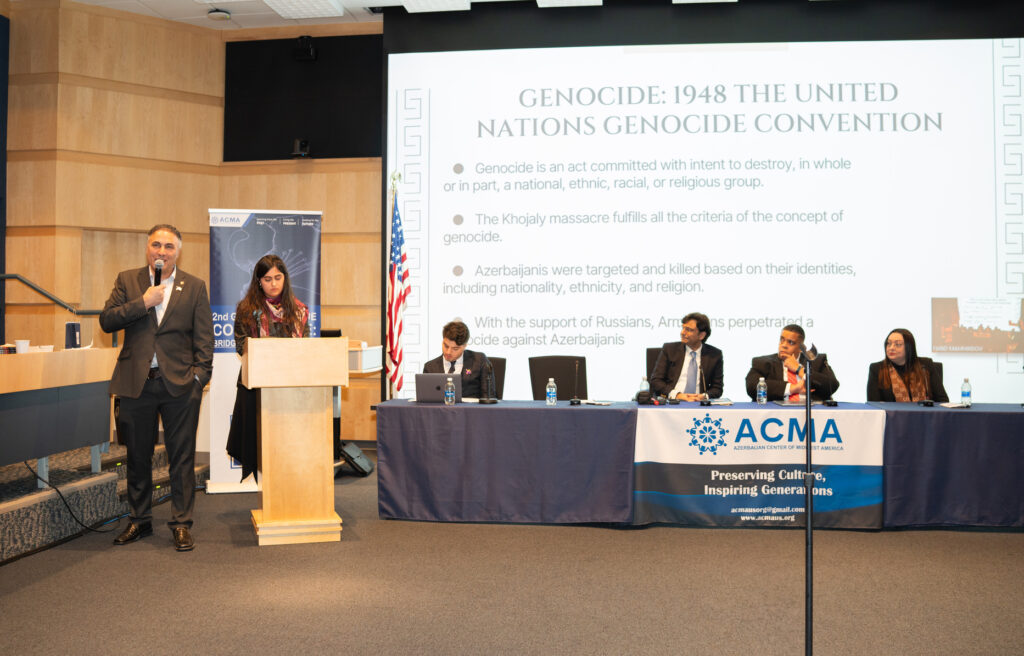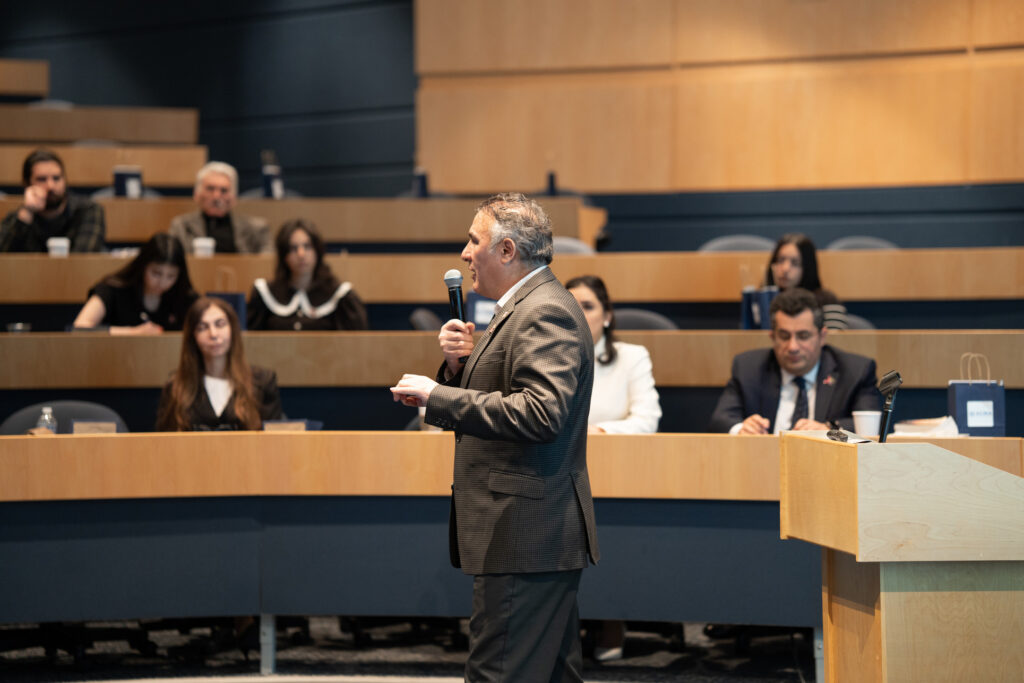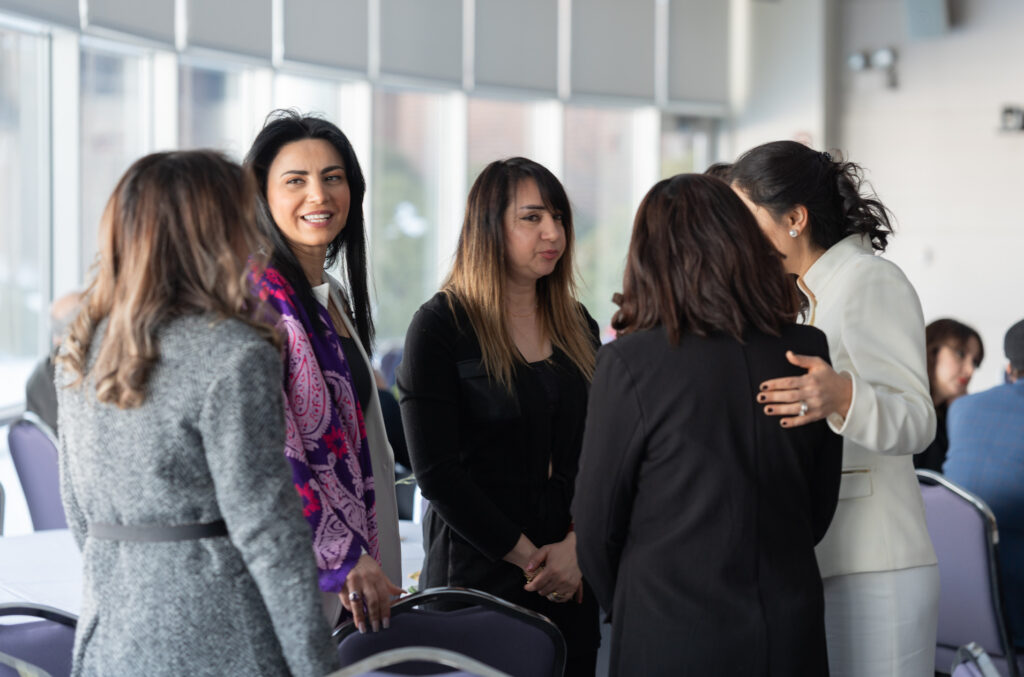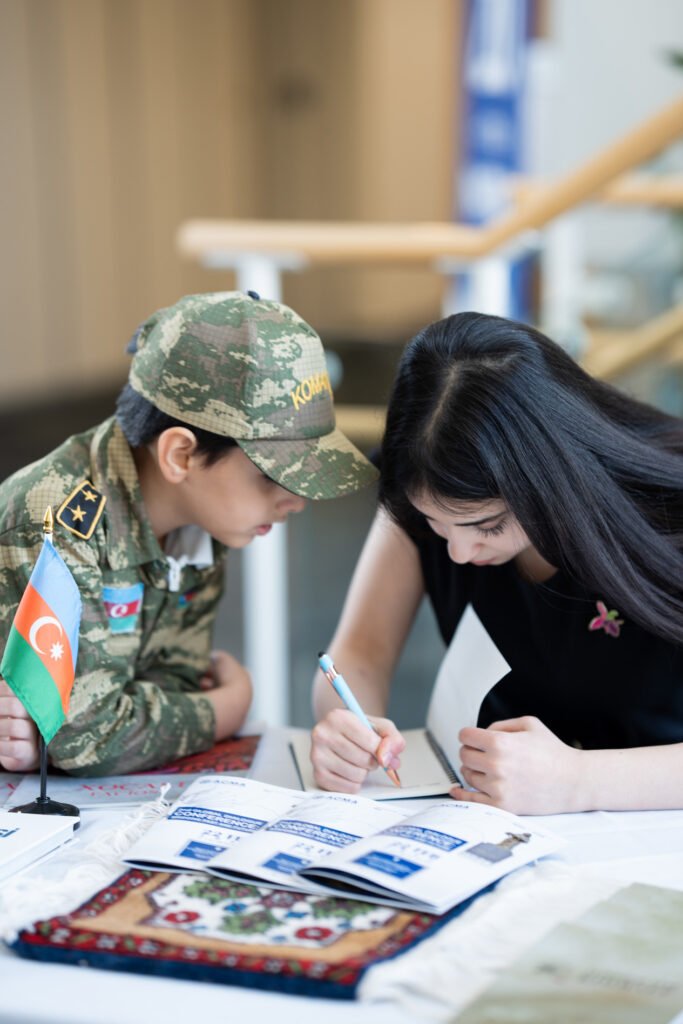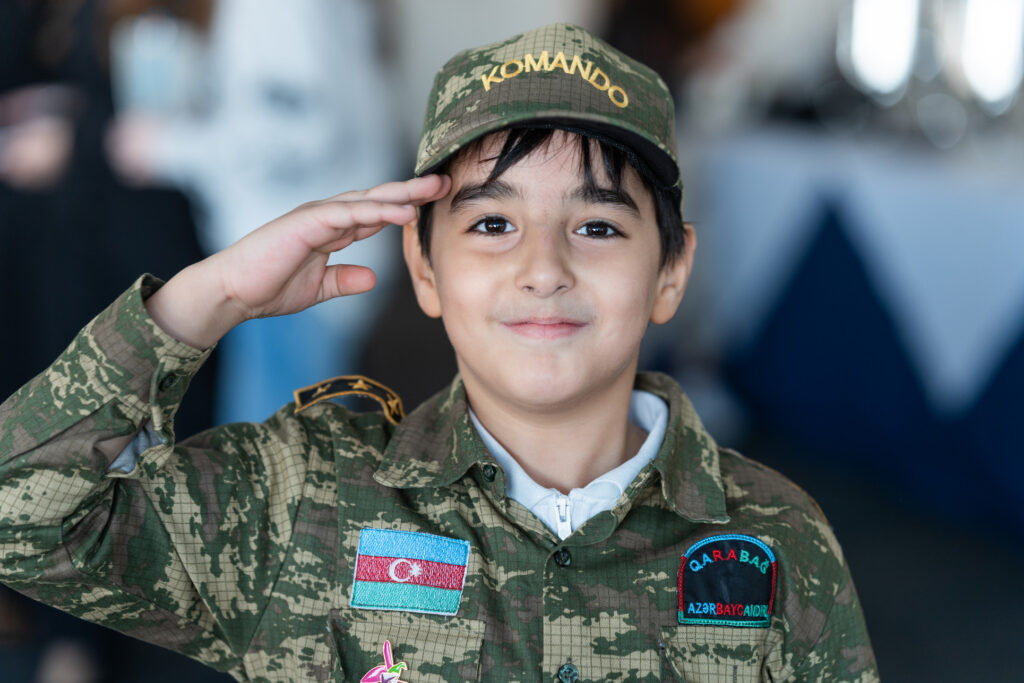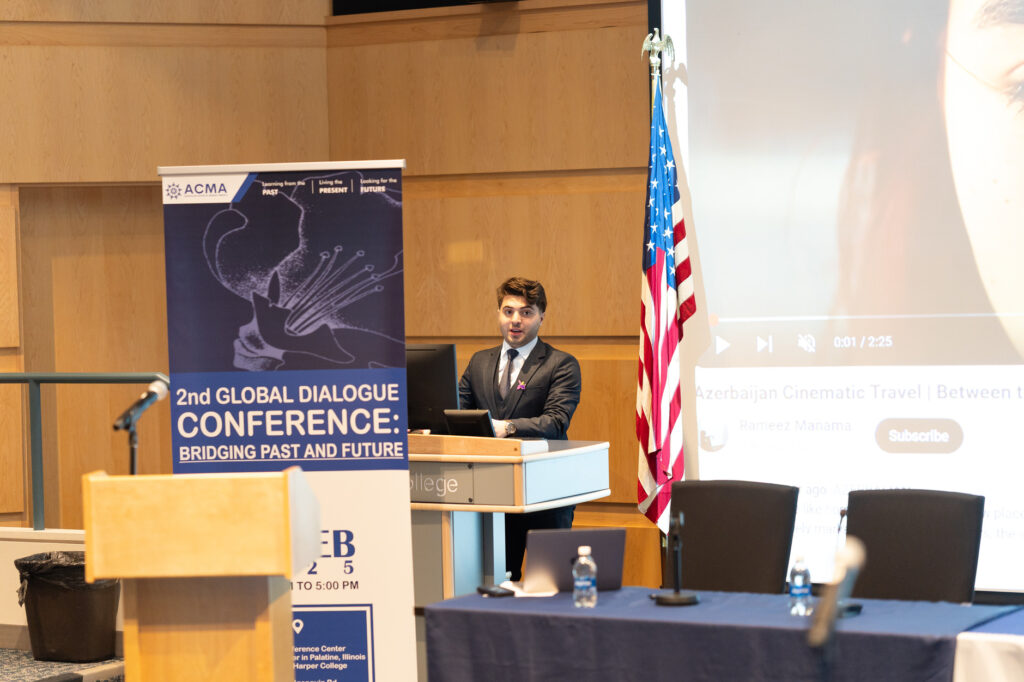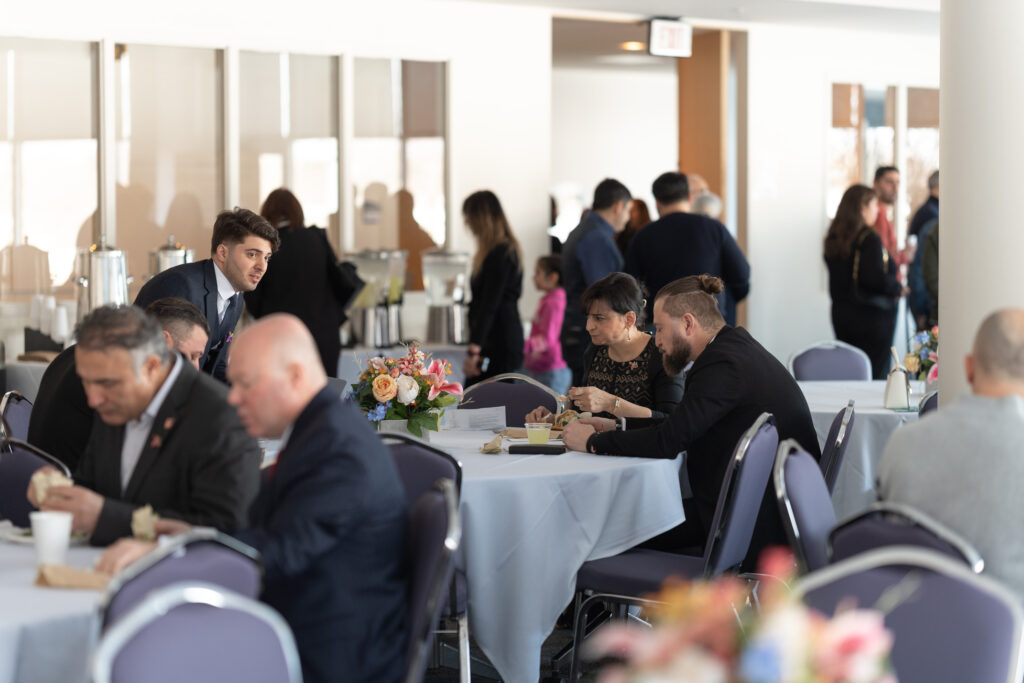FOR IMMEDIATE RELEASE
Date: February 21, 2025
Contact: Azerbaijan Center of Midwest America (ACMA)
Email: acmausorg@gmail.com | Phone: +1 281-221-3035
Website: www.acmaus.org
ACMA Hosts the 2nd Global Dialogue Conference – Bridging Past and Future
Palatine, IL – February 22, 2025 – The Azerbaijan Center of Midwest America (ACMA) is honored to host the 2nd Global Dialogue Conference – Bridging Past and Future, a significant gathering dedicated to fostering discussions on cultural heritage, human rights, and the legacy of the Khojaly tragedy. The conference will take place on February 22, 2025, from 1:00 PM to 5:00 PM at the Wojcik Conference Center, Harper College, Palatine, IL.
This annual conference serves as a platform for distinguished scholars, journalists, diplomats, and community leaders from around the world to engage in meaningful dialogue and explore solutions for the future while reflecting on past events.
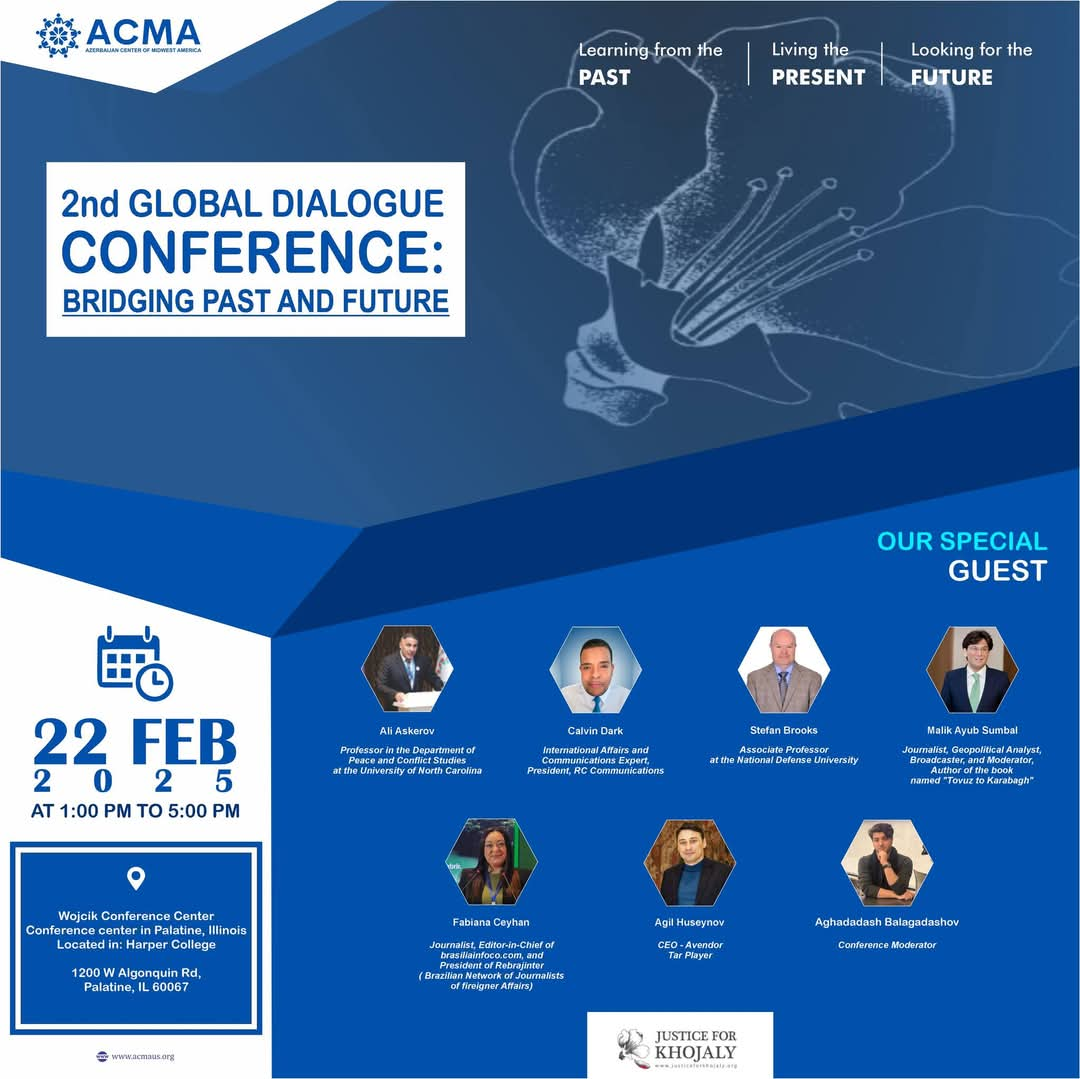 Honored Guests & Speakers
Honored Guests & Speakers
This year, we are privileged to welcome prominent diplomats, scholars, and media professionals, including:
- Salhat Abbasova – Head of Department, State Committee on Work with Diaspora of the Republic of Azerbaijan
- Farid Zeynalli – First Secretary, Embassy of Azerbaijan in the United States
- Tahir Bora Atatanir – Consul General of Turkey in Chicago
- Malik Ayub Sumbal – Journalist, Geopolitical Analyst, Broadcaster, and Author of Tour to Karabagh
- Stefan Brooks – Associate Professor, National Defense University
- Fabiana Ceyhan – Journalist, Editor-in-Chief of Bültendiplomasi.com, President of the Brazilian Network of Journalists for Foreign Affairs
- Calvin Dark – International Affairs and Communications Expert, President of RC Communications
- Ali Askerov – Professor, University of North Carolina
- Fatima Askerova – Special Student Guest Speaker
- Tarlan Ahmadov – Head of Maine Azerbaijan Community, AAAO Board Member
The event will be moderated by Agadadash Balagadashov, ensuring an engaging and insightful discussion.
Event Program
Welcome Remarks
- Farid Mammadov & Mehriban Mammadova (ACMA Leadership)
National Anthems
- United States & Azerbaijan
Moment of Silence
- Honoring the memory of the Khojaly tragedy victims
Short Film Presentation
- A documentary about the Khojaly tragedy
Opening Speeches
- Salhat Abbasova – Head of Department, State Committee on Work with Diaspora of the Republic of Azerbaijan
- Video Address from the President of Azerbaijan on the development of Khojaly
- Farid Zeynalli – First Secretary, Embassy of Azerbaijan in the United States
- Tahir Bora Atatanir – Consul General of Turkey in Chicago
Musical Performance
- Piano Performance by Gunay Alaskarova – Koroghlu Overture
Panel Discussions (Moderator: Agadadash Balagadashov)
- Malik Ayub Sumbal – Journalist, Geopolitical Analyst, Broadcaster, Author
- Stefan Brooks – Associate Professor, National Defense University
Music Break
- Tar Performance by Agil Huseynov
Panel Discussions (Moderator: Agadadash Balagadashov)
- Fabiana Ceyhan – Journalist, Editor-in-Chief of Bültendiplomasi.com, President of the Brazilian Network of Journalists for Foreign Affairs
- Calvin Dark – International Affairs and Communications Expert, President of RC Communications
- Ali Askerov – Professor, University of North Carolina
Special Address
Music Break
- Piano Performance by Gunay Alaskarova
Final Panel Discussion (Moderator: Agadadash Balagadashov)
- Tarlan Ahmadov – Head of Maine Azerbaijan Community, AAAO Board Member
Closing Remarks
- Farid Mammadov (Azerbaijan Center of Midwest America – ACMA)
Why This Event Matters
The 2nd Global Dialogue Conference provides a critical space for discussing the historical significance of the Khojaly tragedy, its impact on human rights, and the role of cultural heritage in shaping the future. By bringing together experts and community leaders, ACMA aims to strengthen international dialogue, promote awareness, and foster collaboration for a more just and peaceful future.
Join Us
The event is free and open to the public. We invite community members, scholars, students, and professionals to join us in this important discussion.
📅 Date: February 22, 2025
📍 Location: Wojcik Conference Center, Harper College, Palatine, IL
⏰ Time: 1:00 PM – 5:00 PM
For those unable to attend in person, we invite you to join the conference via Zoom:
🔗 Join Zoom Meeting: https://us06web.zoom.us/j/89636863831
For more information, media inquiries, please contact us at acmausorg@gmail.com or call +1 281-221-3035.
We look forward to welcoming you to this meaningful gathering.
#GlobalDialogueConference #Khojaly #ACMA #CulturalHeritage #HumanRights #InternationalDialogue #BridgeTheFuture
About the Khojaly Massacre: A Tragedy of Unparalleled Brutality
The Armenia-Azerbaijan conflict is the oldest ongoing conflict in the post-Soviet area. While the root causes of the conflict lie in the centuries-long Armenian historical territorial claims against Azerbaijan, in early 1988 Armenians started aggressive actions against Azerbaijan to implement the long-standing plan to unilaterally secede Nagorno-Karabakh from Azerbaijan and annex it to Armenia. In late 1991 and early 1992, armed hostilities and Armenian attacks on Azerbaijan intensified. Khojaly, a town in the Nagorno-Karabakh region with a total area of 940 square kilometres and a population before the conflict of 7,000, mostly Azerbaijanis, became the target of one of these operations. From October 1991, the town was entirely surrounded by Armenian forces. On 30 October, ground traffic was cut off and helicopters became the only means of transportation. When a civilian helicopter was brought down over the city of Shusha, killing 40 people, helicopter traffic also ceased. From January 1992, the town had no electricity. Khojaly lived on due to the courage of its people and the heroism of its defenders. By occupying Khojaly, Armenia aimed to gain a strategic advantage and favourable conditions for capturing other cities of the Nagorno-Karabakh region. The idea behind the Armenian brutality was to break the spirit of Azerbaijanis to gain psychological advantage in subsequent military operations. They also aimed at wiping Khojaly off the face of the earth, since traces of history in Khojaly and surrounding areas represented historical evidence refuting Armenian territorial claims. Over the night of 25-26 February 1992, following a massive artillery bombardment, Armenian armed forces and paramilitary units, with the support from the former USSR’s 366th Motorized Infantry Regiment, moved in to seize the town. Once the assault began, around 2,500 remaining inhabitants tried to leave with the hope to reach the nearest area under Azerbaijani control. However, they hoped in vain. The fleeing people were ambushed and either killed by gunfire from Armenian military posts or captured near the villages of Nakhchivanly and Pirjamal. Others, mainly women and children, died from frostbite while wandering in the mountains. Only a few were able to reach the Azerbaijani-controlled town of Aghdam. On 28 February, two helicopters with a group of journalists managed to reach the location of the massacre. The horrible scene shocked all – the field was fully covered by dead bodies. The helicopter’s task was to land in the mountains and pick up bodies at sites of the mass killings. Despite the escort of the second helicopter, it was able to take only four dead bodies because of Armenian intense firing. On 1 March, when a group of foreign and local journalists reached the place, the sight that they witnessed was even more terrible. The dead bodies were mutilated and scalped. In the words of the journalist Chingiz Mustafaev, who was one of those that visited the area, among the dead were “dozens upon dozens of children between 2 and 15 years old, women and old people, in most cases shot at point blank range in the head. The position of the bodies indicated that the people had been killed in cold blood, calculatedly, there were no signs of resistance of attempts to escape. Some had been taken aside and shot individually; in many cases whole families had been killed. Some corpses displayed several wounds, one of which was invariably to the head, suggesting that the wounded had been finished off. Some children were found with severed ears; skin had been cut from the left side of an elderly woman’s face; and men had been scalped. There were corpses that had clearly been robbed”. Undoubtedly, what happened in Khojaly was the largest massacre of the conflict. In all, the assault and capture of the town took the lives of 613 of its people, including 106 women, 63 children and 70 elderly. 1275 were taken hostage, while the fate of another 150 people remains unknown. The town was razed to the ground. In the course of that tragic night 487 inhabitants of Khojaly were wounded, including 76 children; eight families were completely wiped out; 130 children lost one parent; and 25 children lost both parents. Of those who perished 56 were killed with particular cruelty: they were variously burned alive, beheaded or had eyes gouged out, while pregnant women were bayoneted in the abdomen. Khojaly is an outrageous case for several reasons. Firstly, it was a completely civilian settlement without serious military equipment and fortifications. The assault with heavy weapons no way be militarily justified because it provided no military advantage. Therefore, the act clearly constituted unnecessary and excessive use of force. Secondly, when the attack broke out it was just the beginning of the interstate phase of the military hostilities; so undoubtedly, Armenia intended to intimidate Azerbaijani civilians to gain psychological advantage for pursuing its subsequent acts of aggression. The unprecedented degree of brutality, including killing at point-black range and with special cruelty and subsequent desecration of corpses by Armenian invaders, can lead only to this conclusion. Another important point is related to the Armenian claim of an existing “corridor”. Armenia claims that it had allegedly left “humanitarian corridor” open for the peaceful population to leave the town. One may ask a reasonable question: why had Armenia left this exit open for people to escape if they aimed at wiping off the whole town? The answer is simple: Armenia did not leave it open for humanitarian reasons as they claim – it was either unable to block the last exit or deliberately left it open to claim afterwards that they have allegedly offered a choice for the civilian population and they had no intention to kill them. The corridor claim is vague and easily refutable in the light of well-established evidence, including eyewitness testimonies, as well as international reports and even Armenian officials’ own confessions. They demonstrate that people fled the town unintentionally, chaotically, without any guidance or first-hand information. If such a “corridor” had existed, people would have been aware of it. Furthermore, if the intention was to provide a humanitarian exit, then Armenia should explain why its militants ambushed and killed the fleeing people along the route – in that “corridor” – soon after they set off to reach the Azerbaijani controlled town of Aghdam. Although it is the bloodiest and largest massacre of the conflict, the Khojaly Genocide is not an isolated case. In fact, mass slaughters in other Azerbaijani settlements committed by Armenia immediately before this massacre, including in Jamilli, Meshali, Kerkijahan, Malibeyli and Gushchular villages, should be regarded as operations designed to pave the way for laying siege to Khojaly.
 Honored Guests & Speakers
Honored Guests & Speakers
